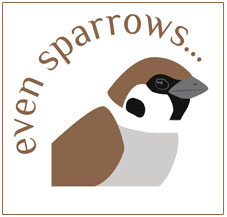

THE JOYS OF 'PATCH' WATCHING
Posted: 01.07.24 in Articles category
THE JOYS OF 'PATCH' WATCHING
I like finding birds on my 'patch'. Like many birdwatchers I know, I have a local area in which I watch birds and I like to discover birds I haven't seen there before. I don't have to travel far as my patch is my village - the Northumbrian village of Felton where I live, the twin village of Thirston and surrounding area. It's a territory measuring 25 square kilometres with the medieval bridge connecting Felton and Thirston at its centre, and it largely corresponds to the parishes of both villages. Over the past 2 decades I have kept a record not only of all the bird species I have seen and/or heard within it, but also the records of others, however historic. It helps hugely having a village magazine, The Bridge, for which I have written a series of articles on local birds and have regularly asked people to send me their records. And they have. Over the years I have learned about summering Corncrakes in the 1950s, the unusual 1980s record of an autumn storm-blown Little Auk found on the bridge and the White Stork seen on farmland in May 2002.
On 29 June this year I added another new bird to my patch list - species number 163. Ringed Plovers are common enough on the Northumbrian coast, but neither myself nor anyone else had reported seeing them around the village. Yet that morning I found 2 adult birds that were probably a pair, apparently setting up territory in an unsown arable field. During the spring I had seen as many as 10 Lapwings in that field, and when I lifted my binoculars to see a small plover I thought I would be looking at a Lapwing chick. What a surprise - a Ringed Plover running at pace as I regularly watch them do on the beaches 10 miles away. I looked again and saw a second bird. It was having an altercation with a Lapwing in the manner of a bird trying to defend a breeding territory. But what were these Ringed Plover doing, trying to breed so far inland on a bare field and on such a late date? Then I remembered about Storm Hector and the strong winds on 14 June that had trashed the nests of terns and plovers at the coast, and I wondered whether these 2 plovers were displaced birds that had moved inland to try again to breed. I can only speculate. Funny to think how unexciting I find it watching Ringed Plovers at the coast, yet I found it such a buzz to see them on my 'patch' !